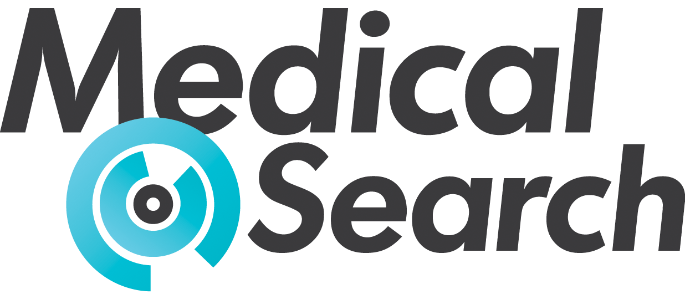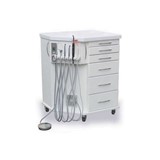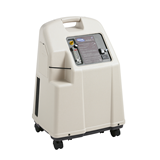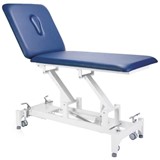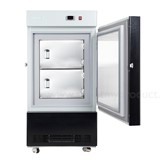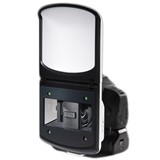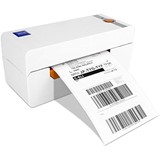Compare diamond vs crystal microdermabrasion machines by price, ROI, treatment results and patient comfort. Learn which suits your clinic best and avoid costly buying mistakes.
Key takeaways
- Machine costs: Crystal and diamond microdermabrasion machines in Australia typically range from $3,000 to $15,000, depending on brand, features, and attachments.
- Best for spas: Crystal machines suit clinics focused on deep exfoliation and traditional treatments.
- Best for salons and skin studios: Diamond machines are favoured for precise control, less mess, and easier integration into multi-service environments.
- Maintenance needs: Crystal machines require ongoing consumables like aluminium oxide crystals; diamond machines require less frequent maintenance.
- Popularity in Australia: Diamond machines dominate over 70% of the Australian aesthetic market due to their convenience and lower operational costs.
- Treatment differences: Crystal machines exfoliate more aggressively, while diamond-tipped systems allow for more targeted and gentle treatments.
- Regulatory note: Devices must comply with TGA standards in Australia. Professional training and appropriate skin consultation processes are also essential for use.
Introduction
Choosing the right microdermabrasion machine for your clinic can directly affect treatment quality, client satisfaction, and your bottom line. In Australia, clinic owners are typically faced with two main options: crystal microdermabrasion and diamond-tipped microdermabrasion. While both methods aim to exfoliate the skin and rejuvenate the complexion, they differ significantly in terms of technology, application, upkeep, and cost.
This comprehensive guide compares crystal vs diamond microdermabrasion machines from an Australian buyer’s perspective. You'll learn the differences in treatment outcomes, cost-effectiveness, patient comfort, and which model suits different clinic types best—whether you operate a salon, spa, or dedicated skin treatment clinic.
What is crystal microdermabrasion?
Crystal microdermabrasion uses a stream of fine aluminium oxide or sodium bicarbonate crystals directed at the skin to exfoliate dead cells. A vacuum simultaneously removes crystals and skin debris.
Pros
- Deep exfoliation: Ideal for congested or thicker skin types
- Traditional technique: Familiar to experienced therapists
- Customisable abrasiveness: Controlled by crystal flow rate
Cons
- Consumable costs: Requires continuous purchase of crystals
- Messier operation: Residue may require cleanup between sessions
- Potential discomfort: Crystals can be abrasive for sensitive clients
Example use case: A skin clinic in Brisbane specialising in advanced acne treatments might choose crystal machines for their more aggressive exfoliation potential.
What is diamond microdermabrasion?
Diamond microdermabrasion uses a wand embedded with diamond particles to exfoliate the skin. Suction removes debris as the wand passes over the skin.
Pros
- Cleaner procedure: No loose crystals mean less mess
- Gentler control: Great for treating sensitive areas like around the eyes
- Low maintenance: No consumables except filter changes and head sanitation
Cons
- Lower intensity: May be less effective on thicker or severely congested skin
- Training required: Technique-dependent results
Example use case: A Melbourne salon offering a variety of skin treatments, including microdermabrasion and LED therapy, may prefer a diamond system for ease of switching between services.
Cost comparison: crystal vs diamond machines in Australia
- Crystal microdermabrasion systems typically range from $4,000 to $12,000. These machines require ongoing consumables, specifically aluminium oxide crystals, which add to the operational cost. Due to their design, they also demand more frequent maintenance, which can increase downtime and service fees. On the plus side, clinics can usually charge $120 to $180 per session, and with moderate treatment volumes, the return on investment (ROI) is often realised within 3 to 5 months.
- Diamond microdermabrasion systems are slightly more variable in price, ranging between $3,500 and $15,000, depending on features and brand. They have minimal consumables—usually just filter cartridges—which keeps ongoing costs low. Maintenance is also significantly less frequent compared to crystal models. Treatment sessions are generally priced at $100 to $160, and thanks to lower overheads, clinics often recover their investment within 2 to 4 months.
Treatment outcomes and clinical suitability
Choosing between crystal and diamond microdermabrasion systems often comes down to the type of clients you treat and the skin concerns you address most frequently. Both machines exfoliate the skin, promote cellular turnover, and improve skin texture, but the mechanism of action—and therefore the outcomes—can differ significantly.
- Crystal microdermabrasion machines use a fine spray of aluminium oxide or sodium bicarbonate crystals to exfoliate the skin’s surface. These machines are typically more aggressive, making them a better choice for:
- Treating acne scarring, stretch marks, and rough or thick skin
- Clinics offering advanced resurfacing treatments
- Experienced practitioners seeking customisable treatment depth
- Diamond microdermabrasion machines, on the other hand, use a diamond-encrusted wand to gently abrade the skin without loose particles. They are better suited for:
- Sensitive or rosacea-prone clients
- Delicate treatment areas (e.g. under-eye region)
- Clinics offering high-end, relaxing facials where a quieter, less abrasive experience is ideal
Staff training and ease of use
Another key factor in selecting the right machine is how easily your staff can learn, use, and maintain it—especially in busy or multi-staff environments.
- Diamond machines generally have a shorter learning curve. The treatment depth is controlled by pressure and wand movement, making it easier for new therapists to master. They’re also easier to maintain—no need to handle or replace abrasive crystals between sessions.
- Crystal systems require more skill to operate correctly. Incorrect usage can lead to inconsistent results or skin irritation. These systems also demand more frequent maintenance, such as changing crystal canisters and cleaning the vacuum pathways.
Patient comfort and satisfaction
Client comfort is critical in both repeat bookings and word-of-mouth referrals. While both technologies offer effective exfoliation, how they feel during treatment can impact satisfaction scores.
- Crystal systems tend to feel more abrasive and may leave a slightly gritty residue. Clients may also notice a stronger suction sensation and more noise during treatment. However, the intense exfoliation can be a positive selling point for results-driven clients.
- Diamond machines offer a quieter, smoother experience. There’s no airborne crystal dust, and the wand allows for more precise pressure control. These systems are typically better received in spa-like settings or among clients with anxiety about skin treatments.
Which machine is best for your clinic?
For spas and medi-clinics:
- Choose crystal machines if:
- You specialise in medical-grade exfoliation
- You treat acne, pigmentation, or thickened skin
- Your team is trained in precise exfoliation techniques
For salons and multi-service studios:
- Choose diamond machines if:
- You want a low-mess system that integrates into facial menus
- You treat a broad range of skin types, including sensitive clients
- You want a simpler operational model with fewer consumables
For mobile or at-home services:
- Diamond machines are typically lighter, quieter, and more portable
Client comfort and treatment experience
- Crystal: May feel abrasive or scratchy; some clients report discomfort during high-intensity sessions
- Diamond: Smoother and quieter operation; more relaxing for clients
Noise levels:
Diamond machines tend to be quieter—an important factor in boutique environments
Treatment time:
Similar (20–40 minutes per session), though diamond machines may require more passes for desired results
Cleaning, sterilisation and regulation
- Crystal systems: Require full internal cleaning and replacement of canisters between clients
- Diamond systems: Require disinfection of wands and heads; some offer autoclave-safe parts
- Both types should comply with Australian TGA regulations and require operator training
FAQs: Crystal vs diamond microdermabrasion
- Which type of microdermabrasion is more effective?
- For deeper exfoliation, crystal systems are more aggressive. For general use and sensitive skin, diamond systems are preferred.
- Are crystal machines more expensive to maintain?
- Yes. Ongoing costs for replacement crystals can add up, especially in high-volume clinics.
- Do diamond systems provide the same results?
- Yes, but they may require more precision and longer treatment time on thick skin.
- Can I use both systems in one clinic?
- Yes. Many advanced clinics offer both for flexibility.
- Are these machines safe for all skin types?
- Both systems are generally safe, but crystal systems are best avoided on rosacea or extremely sensitive skin.
- How many sessions do clients usually need?
- A course of 4–6 sessions is standard for visible improvement.
- Do I need special certification to use these machines in Australia?
- You don’t need a medical licence, but certified training in cosmetic dermal science or aesthetics is recommended.
Final thoughts
When deciding between crystal and diamond microdermabrasion machines, consider your business model, treatment menu, client base, and long-term costs. While crystal systems are ideal for intensive exfoliation, diamond machines win on ease of use, client comfort, and lower maintenance. Either option can deliver strong ROI with the right application and training.
For the best results, always source your machine from a reputable Australian distributor, verify that the device complies with TGA guidelines, and ensure your staff receives appropriate training before offering treatments.
With the right system in place, your clinic can deliver outstanding skin results—keeping clients happy, coming back, and referring others to your services.
